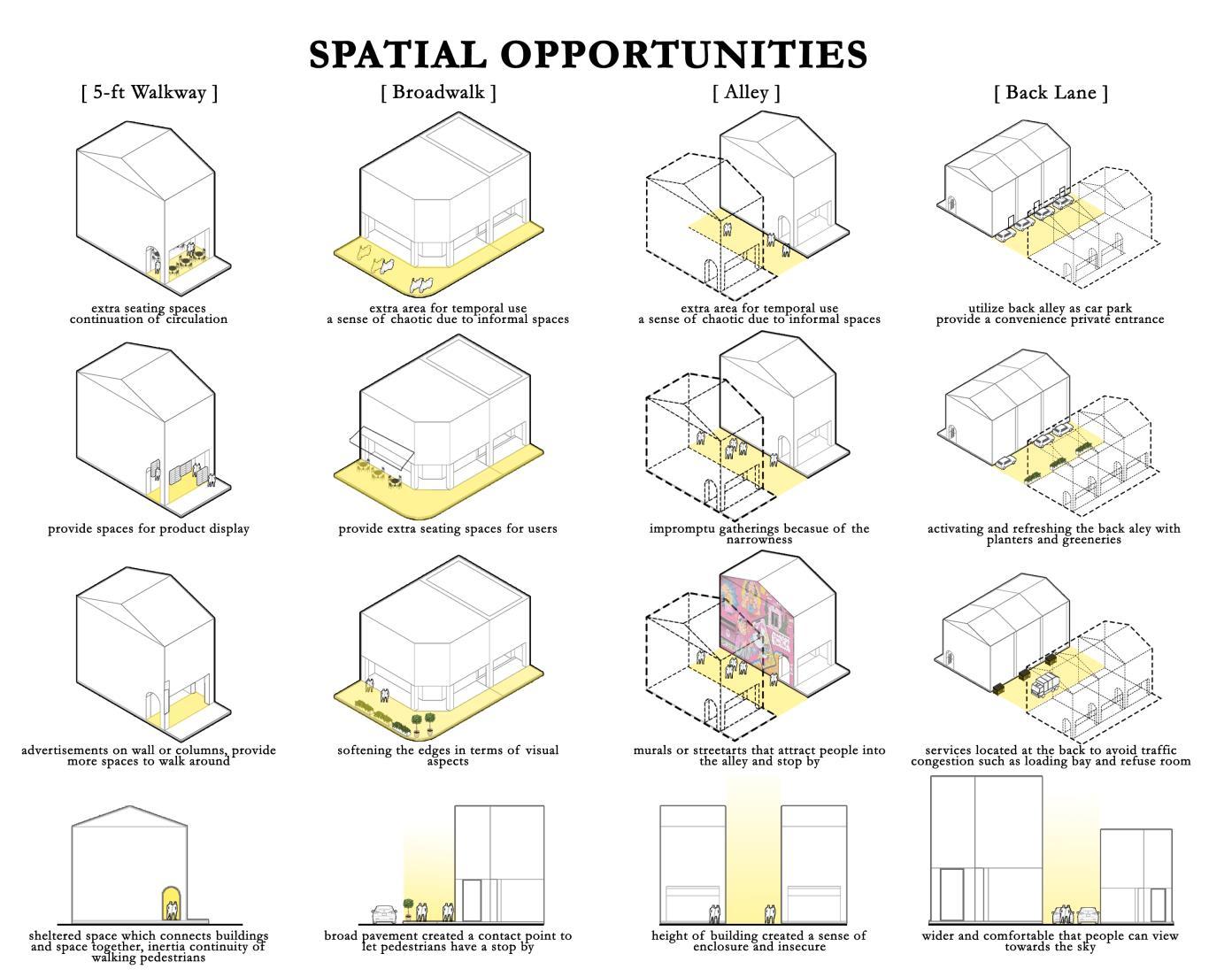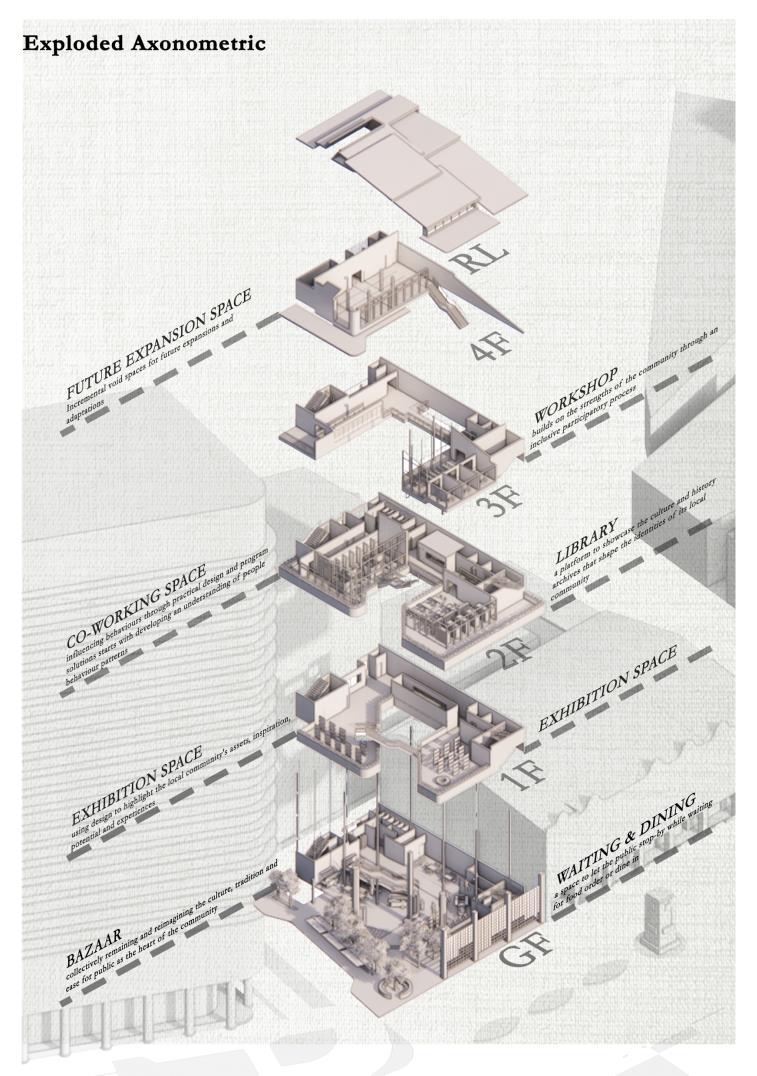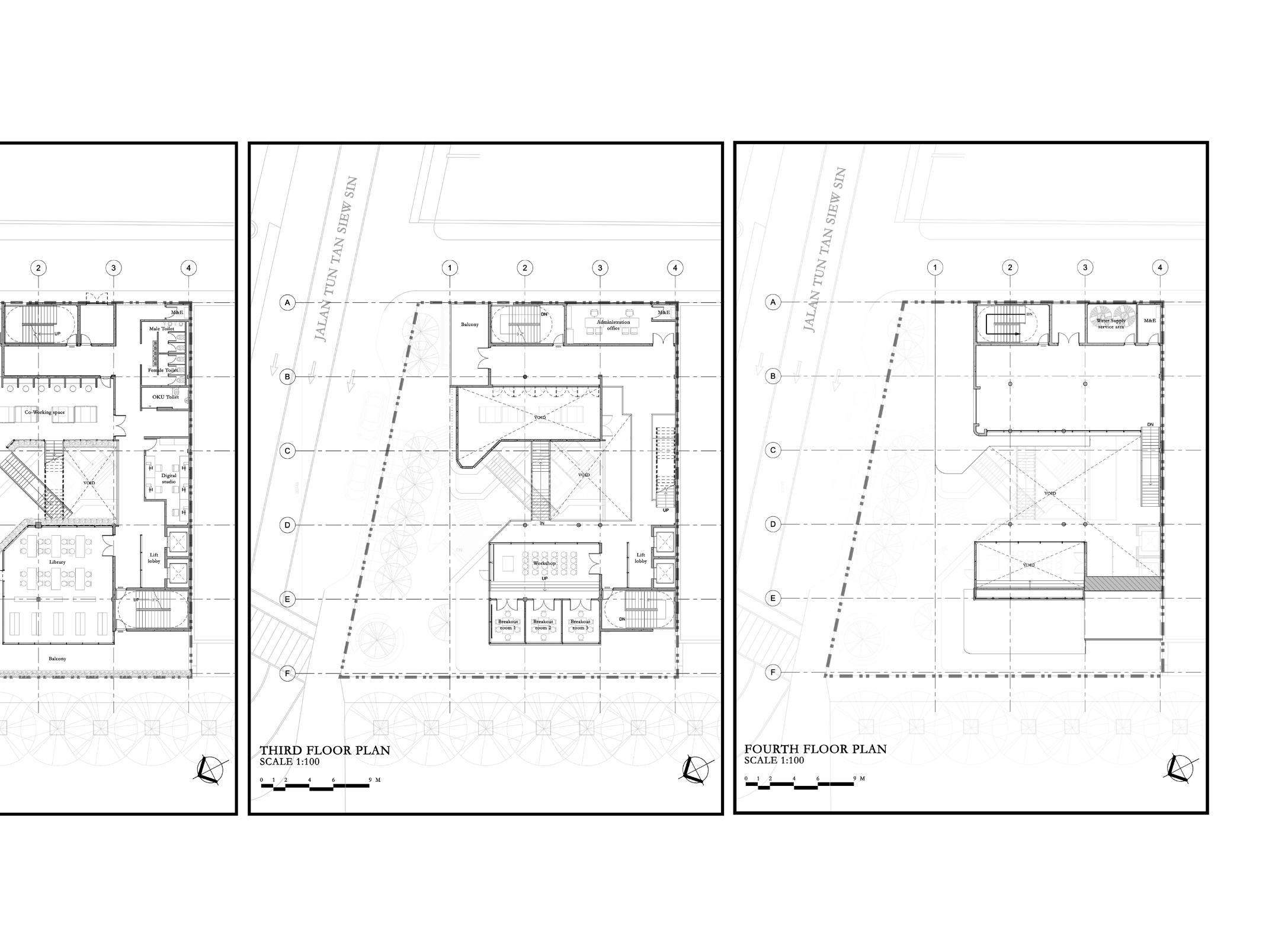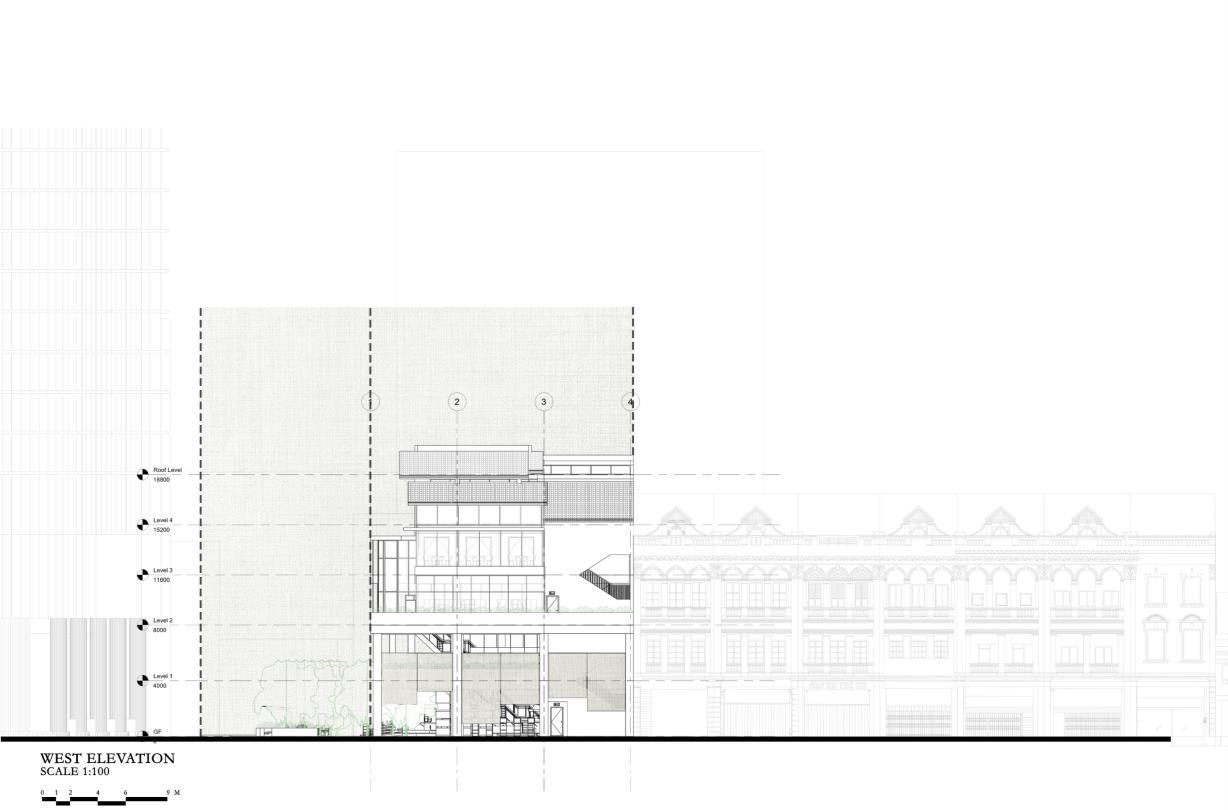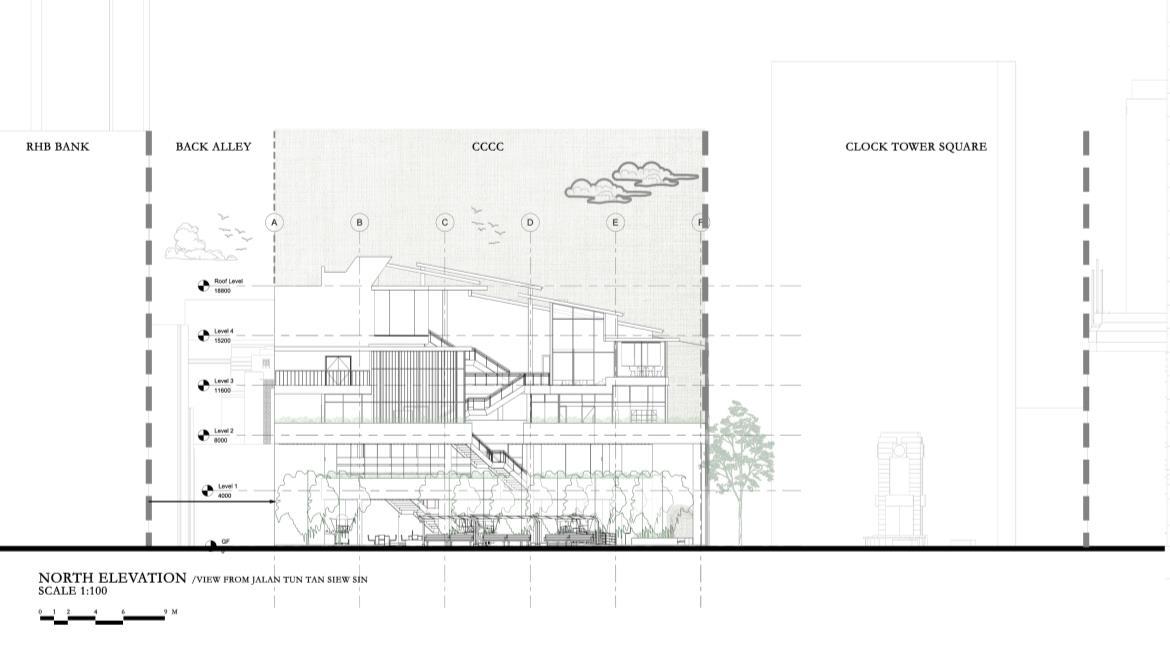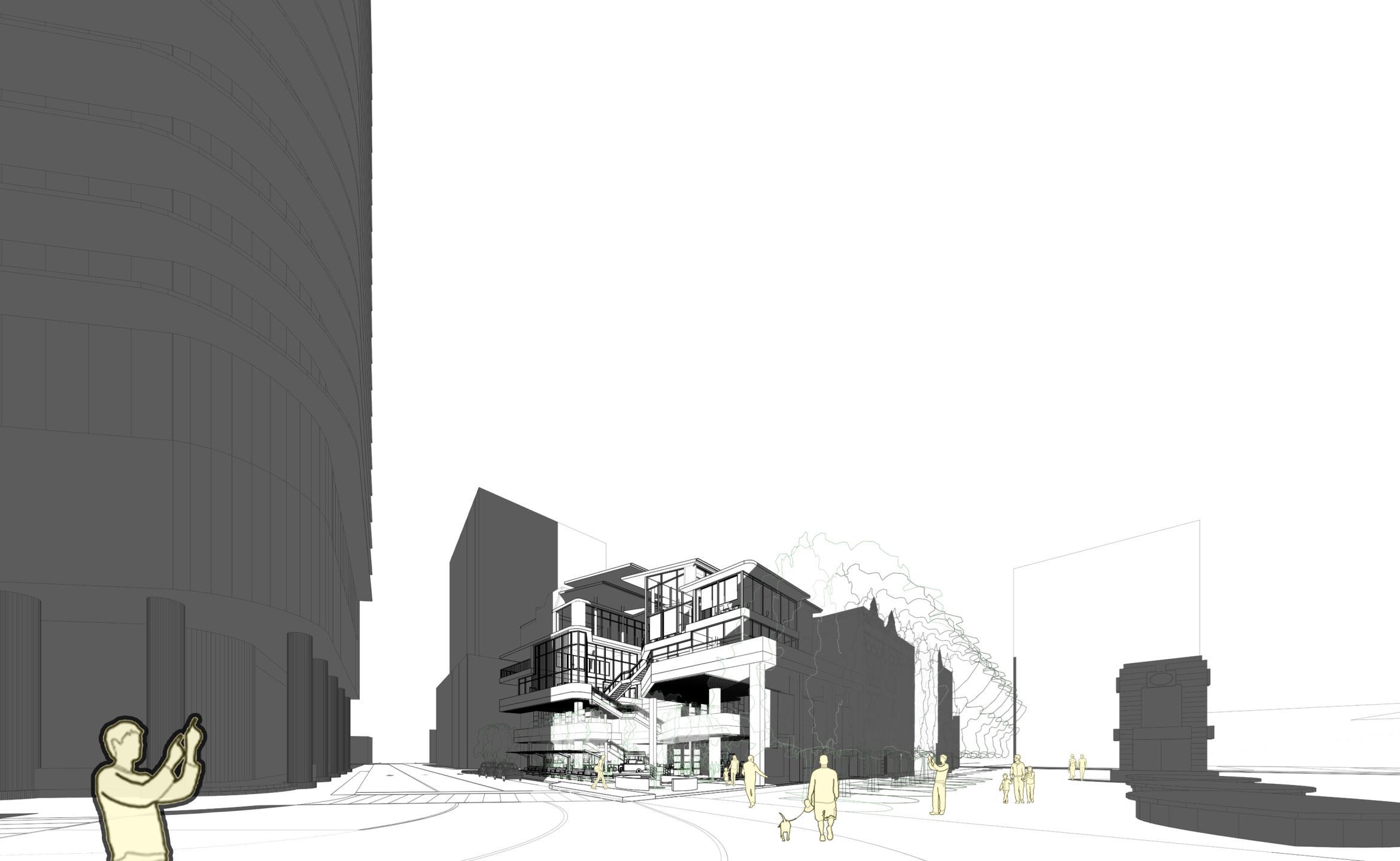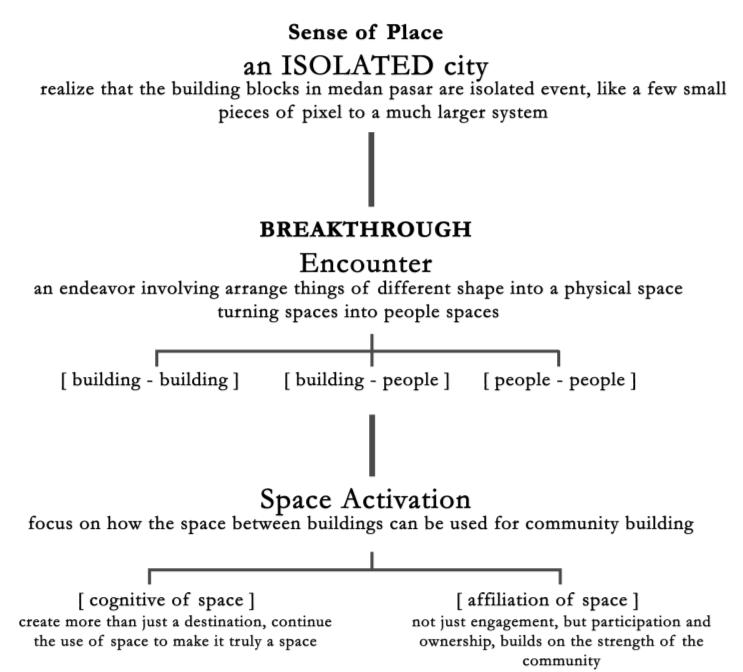
6 minute read
ARCHKK PORTFOLIO
from ARCHKK Portfolio
by Anson Ong
Subang Jaya, Malaysia.
Work Experience
Advertisement
The idea of working in the industry earlier was to explore and learn before actually pursing architectural studies while also performing draftsperson duties. Worked closely on and off site. with our team of designers and contractors to produce precise and detailed drawings for a range of projects .
Education
• Native Chinese, English, Malay

Terminal 01
An Urban Connector
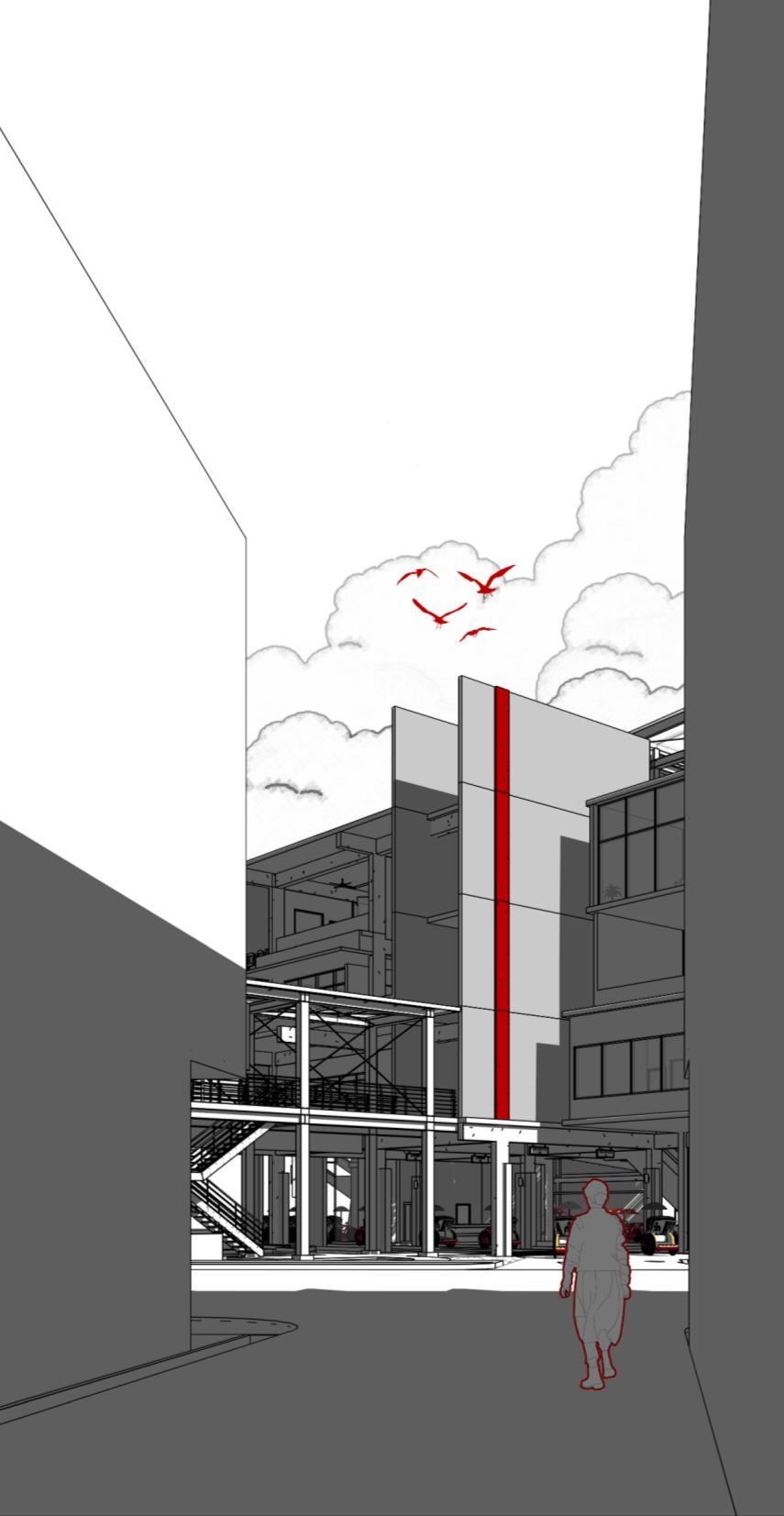
Kampung Jawa, Ipoh
'Pause and Play' stands for the two essential fragments of life Having two target users, which the elderlies connect to the recreation and spiritual experiences and the youths bring vitality to the more dynamic endeavours of daily life.
Terminal 01 is a transit hub providing a transport system with many inbound and outbound connections in the city. The hub is in a central plot, which was left undeveloped from the beginning and was a real break in the urban fabric of the city. Due to insufficient supply of social welfare and diversity of services, highlighting how the hub act as urban connector, a place not only of transport connection, but also of social interaction, bridging them together.
With the relocation of adolescents in urban, the issue of population ageing in Kampung Jawa getting serious regularly. The ability to move or walk freely and easily to destination is critical for them if the destination getting further as the increase in span of urban development. As people age, people may experience changes to our mobility. There are many reasons for these changes, including changes in gait, balance, and physical strength. The stagnant city which relies on wheels to manoeuvre around transitions on streets, have fun, hang out with their families and neighbours in their common ground after dusk and leisure time, had buried in their past as time goes by.
Stressing the hub’s role as the point of intersection in the city, it outlines the significance of this transitional space. The hub strives to provide solutions for both through spaces and give life an essence. Explore on what are the common needs and aspirations they do as interests, unwind or be with friends.
With the transit-oriented development concept in creating a vibrant, liveable community, The project encourages community engagement and foster diversity of cross-programming and frees up the ground level for activity generators, bring in vitality within the community and vibrancy to the streets. The design is inspired by static, dynamic, compartmentalized, and versatility as depicted by Kampung Jawa, Ipoh.
The project is conceived to incorporate the fast flow of the travellers, as well as the slow flow of the visitors, providing accessibility for everyone at the area of immediate contact between two main streets in Kampung Jawa. The site has a significant location sit at the crossroads of Jalan Lim Bo Seng and Jalan Horley, with a bridge at the end of Jalan Lim Bo Seng, connecting the old town and new town of Ipoh.

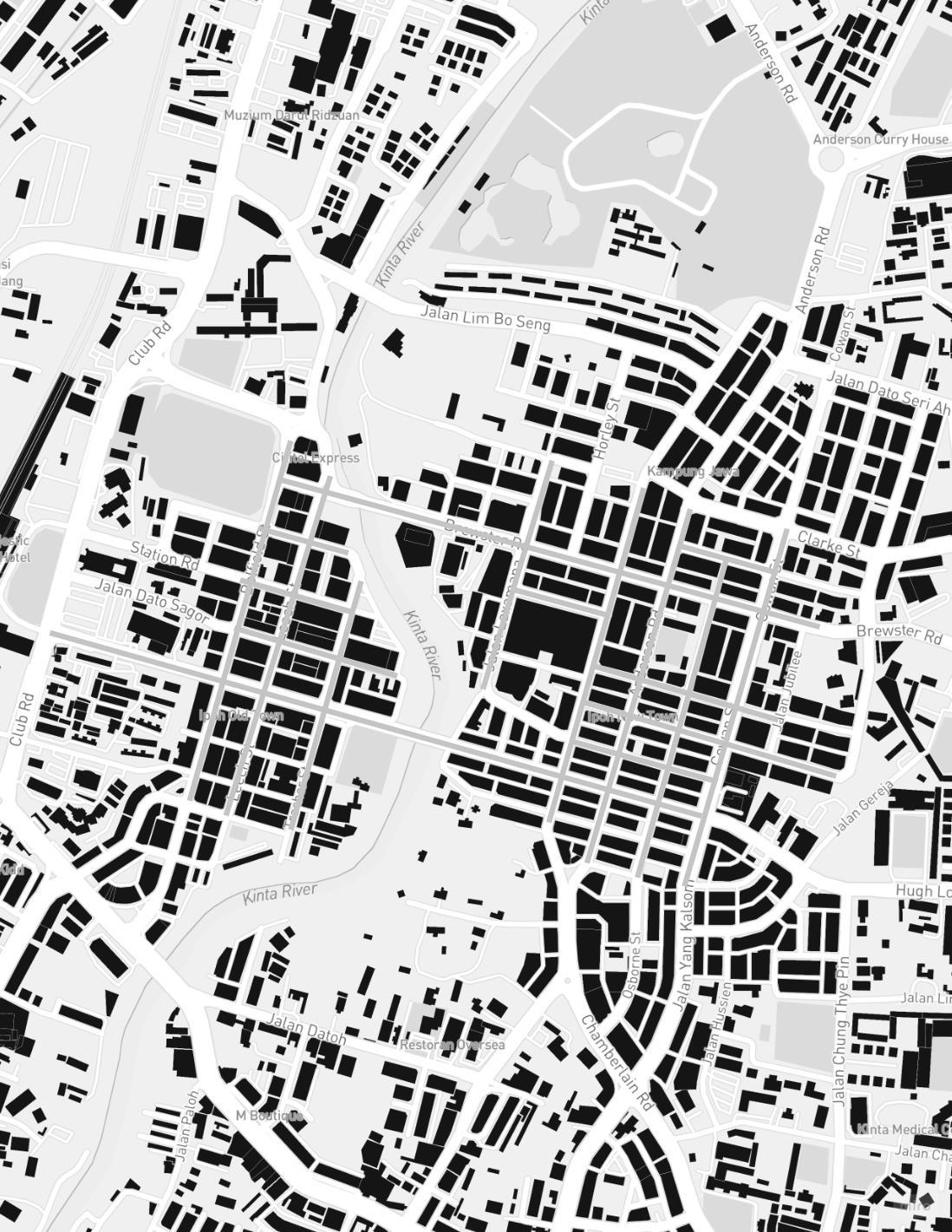
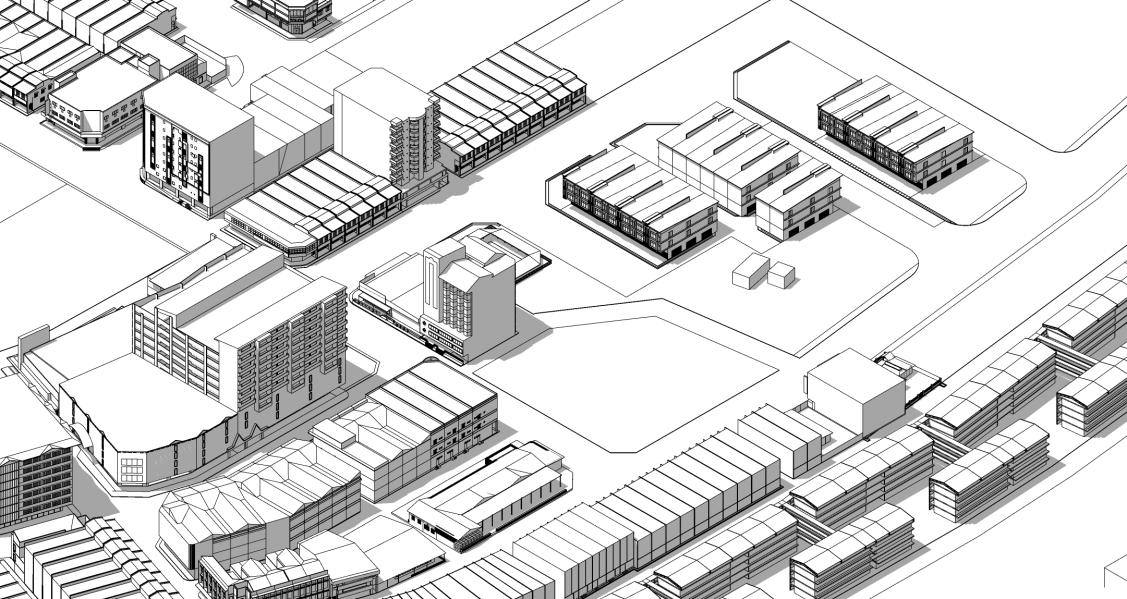
In the intersection of the city, gaps, social spaces and inner streets experiences are created These social spaces include parks, courtyards, landscape platforms, street arcades, courtyards and a theatre These spaces are scattered in size, accessible in all directions, blending inside and outside, and naturally merging. It results of a rich experience of wandering, full of encounters around street corners

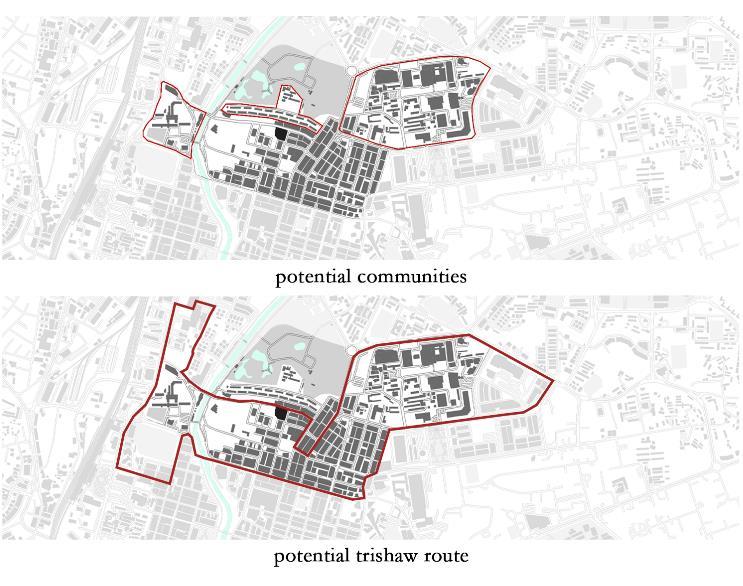

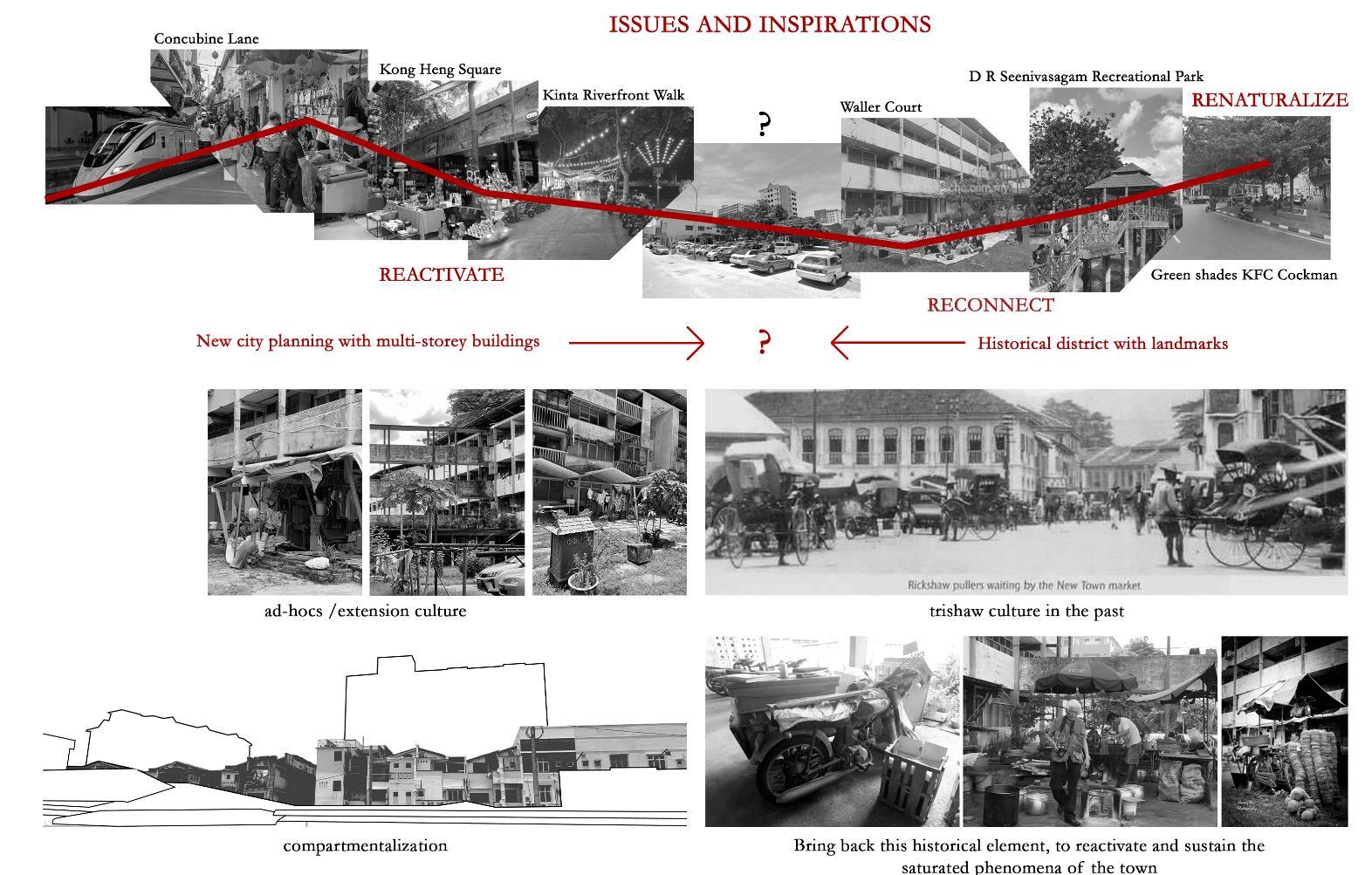
Environmental Impact
Transit Hub
several transit routes converge, designed to permit transfer between transit routes.
SOCIAL IMPACT Nodes
social connection in between people and linkages
Tracing back to their basic needs in daily life, trishaw represents an economy and transportation role in the transport system that is well designed to transport people and goods in small, congested markets over a relatively short distance
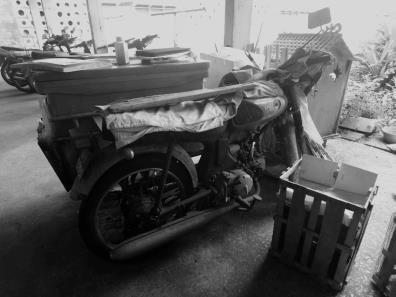


Connection engage connection between local community and outsider, sustain economy

Common Ground activities address themes of communicating across difference, social identities
Revitalise the sustainability of Kampung Jawa, reclaim its own pace with the rest of the Ipoh, through creating a versatile extension of inner space with better quality as third place. Finding the similarities and difference in the past and present, seeking the temporal and versatility of wheels in their daily life.
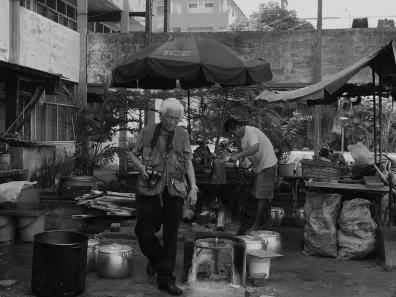
Stressing the station’s role as the point of intersection in the city, they outline the significance of this transitional space, as transit hubs increasingly come to act as windows onto cities All the while conceiving a functional redesign receptive to users’ needs, the design cultivate the station’s essence as the city’s social nerve, envisioning how to further integrate it into the surrounding urban fabric and invite new social dynamics within it

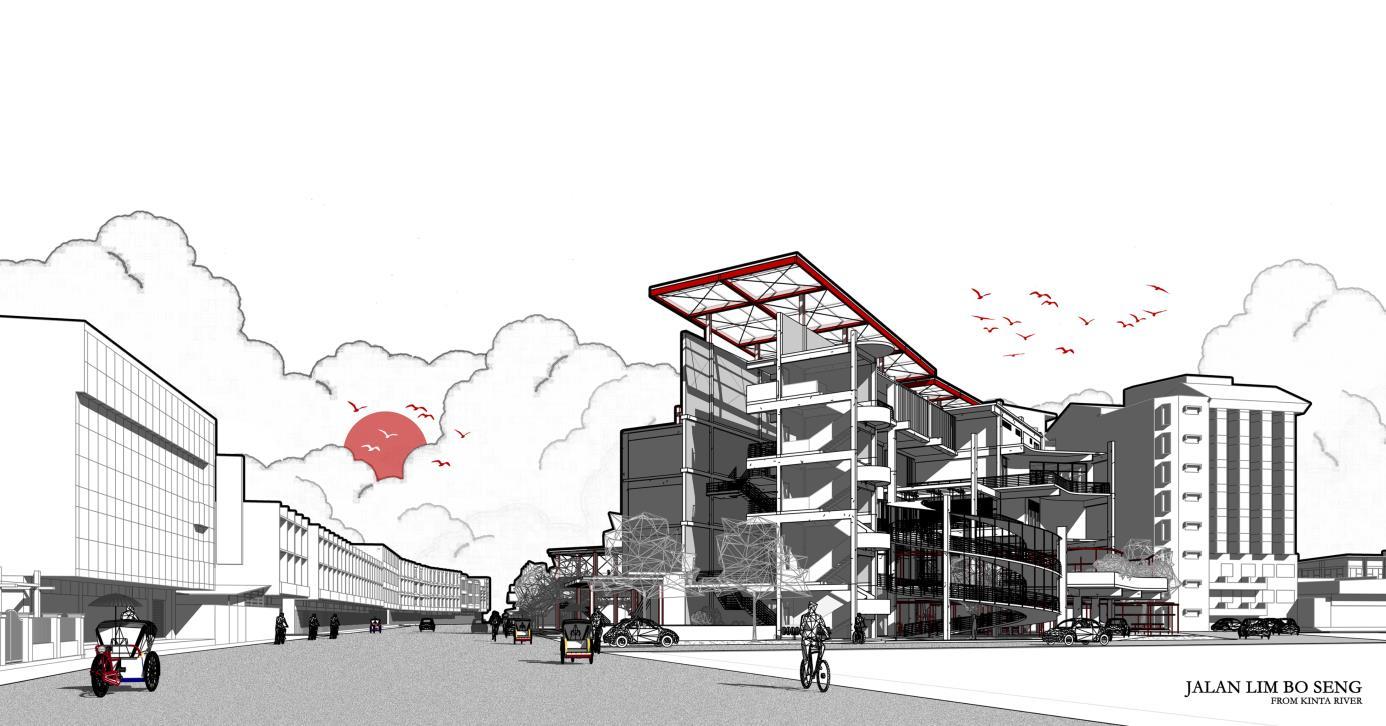
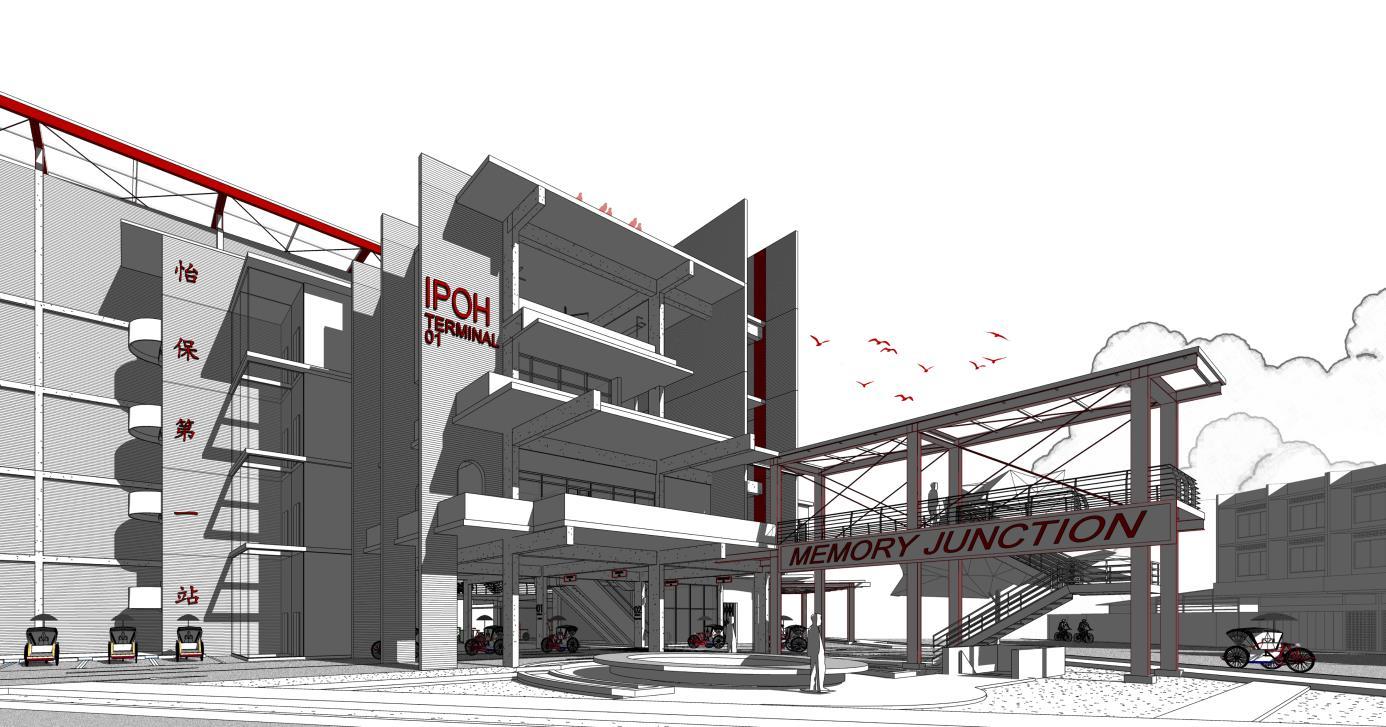

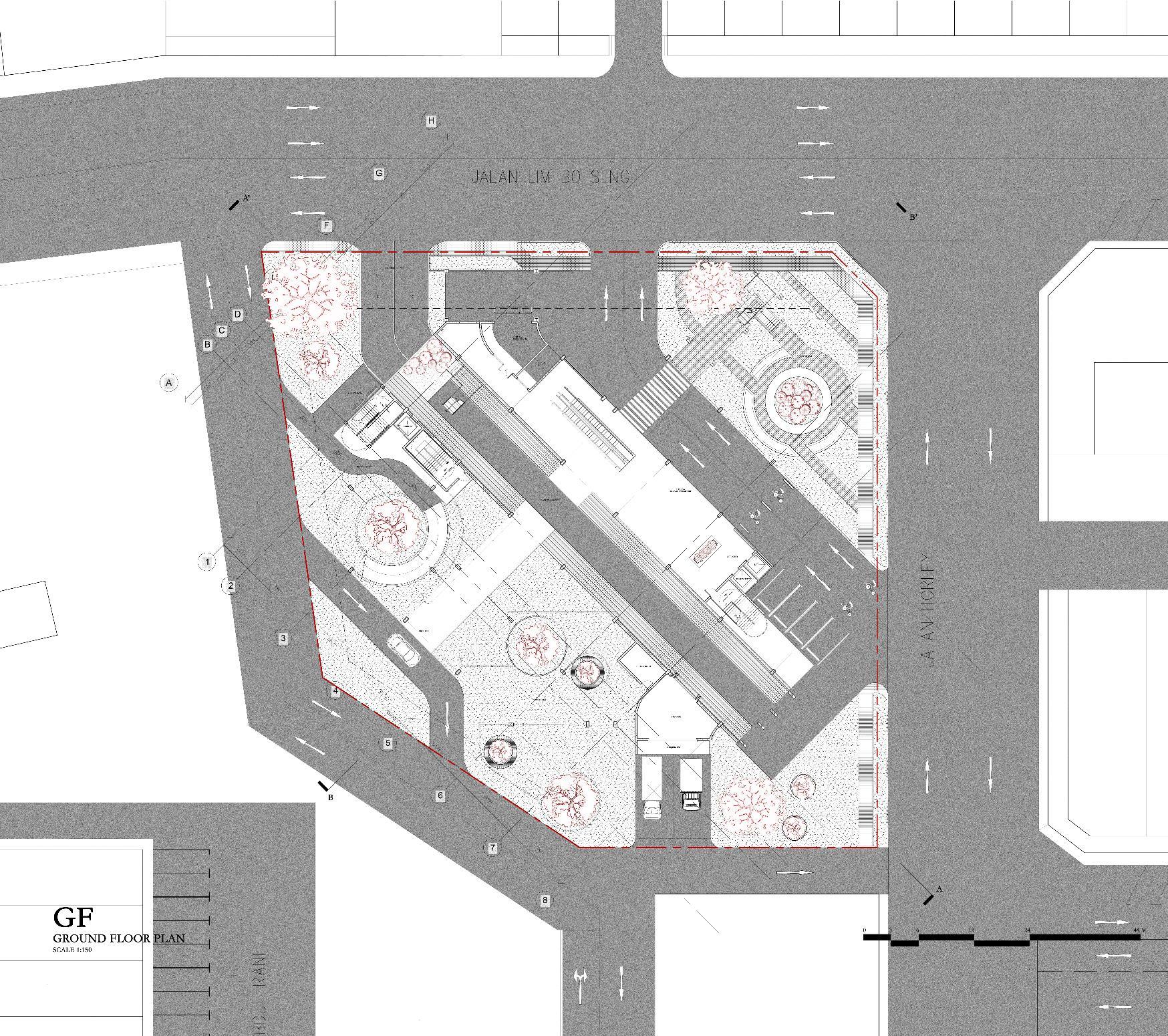
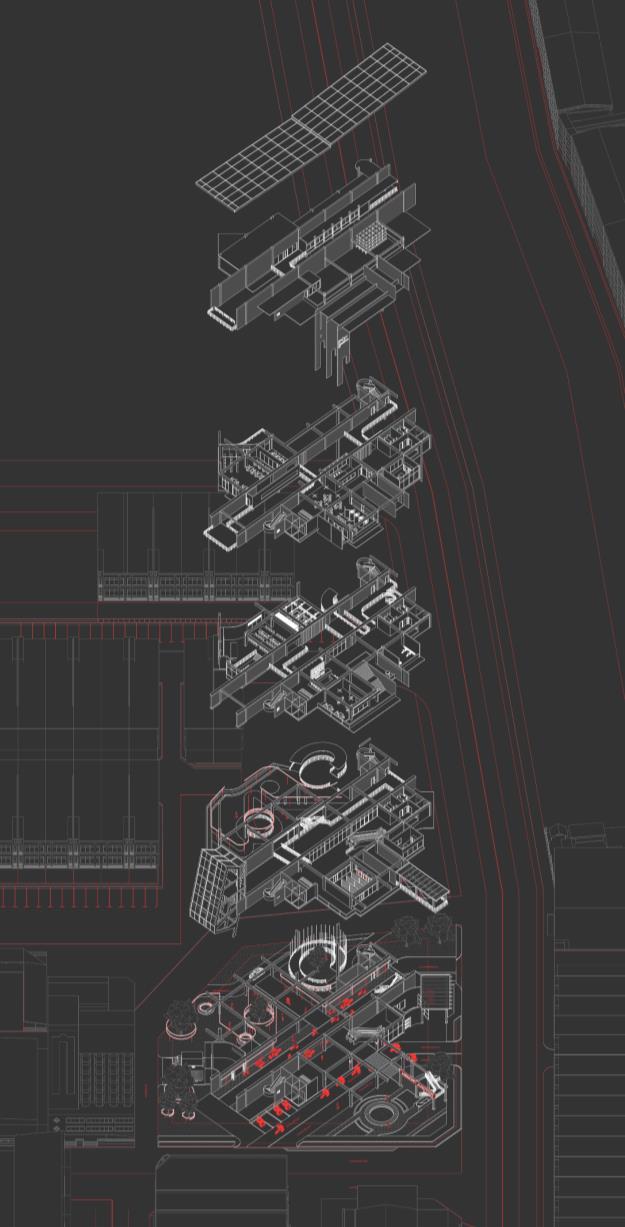
The building uses to foster diversity of cross-programming and frees up the ground level for activity generators. The proximity to healthcare, social, commercial and other amenities support inter-generational bonding and promote active ageing in place were placed above

When combined with an activating community center, the transit hub increases public space's ability to influence people's lives positively Reconnect the park with the everyday life of neighbors, creating an accessible, inclusive, and safe space with a gender perspective


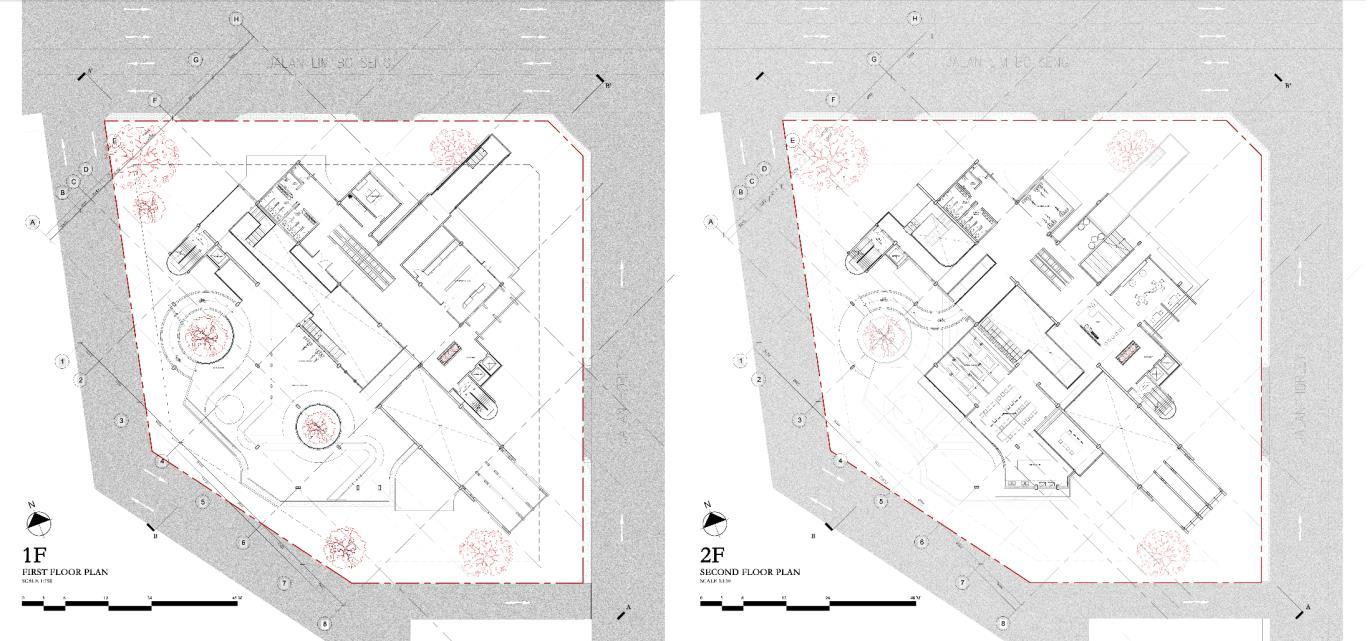


Every city is dependent on mobility Mobility enables people, goods and ideas to move in, out and within our cities, whether on its roads or in the air As urban centers continue to increase in size and density, mobility is becoming a more pressing issue for a city’s residents. In today’s cities, journey times are increasing, and transport infrastructure is under greater pressure than ever
Anson Ong Kah Kit Bachelor of Science (Honours) in Architecture


Transit hubs are no longer simply a place where the traveler arrives or departs The facilities in and around the hub make the area a destination itself and can provide a ripple effect that encourages investment in the area, generates new revenue streams and boosts wider prosperity

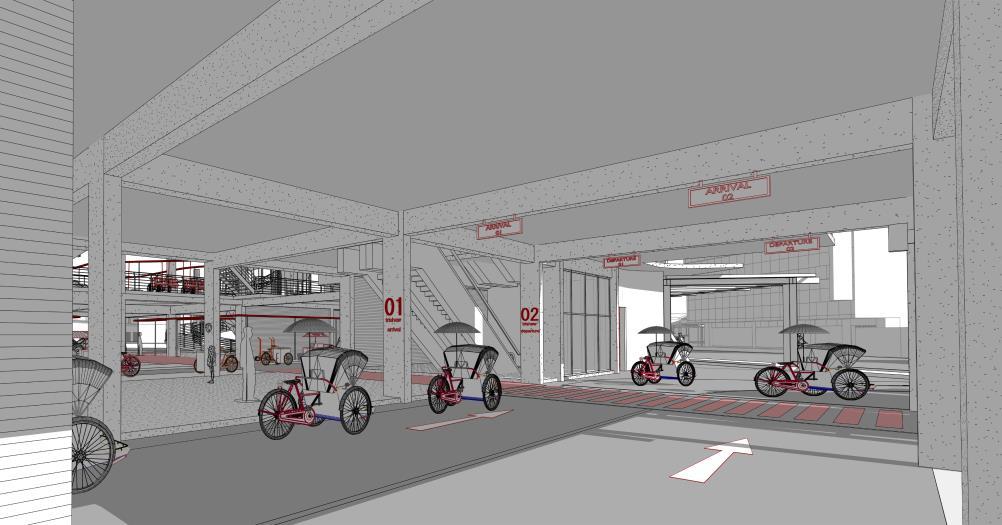
Terminal 01
The gateway to mobility and greater accessibility
Due to insufficient supply of social welfare and diversity of services in this small town, more and more youngsters are moving from small town to live in bigger cities or abroad The exceptional architectural solution of the building, which functionally aims to concentrate services, small business and trade activities, helped the municipality to concentrate business and create new jobs in the region, not only performs the function of the transport infrastructure, but also solves an explicit social mission
Solidifying the location as the beating heart of the city’s culinary experience, and the role it plays in maintaining local culture and community, being an important role as a third space for the dwellers in Kampung Jawa, Ipoh

Anson Ong Kah Kit Bachelor of Science (Honours) in Architecture
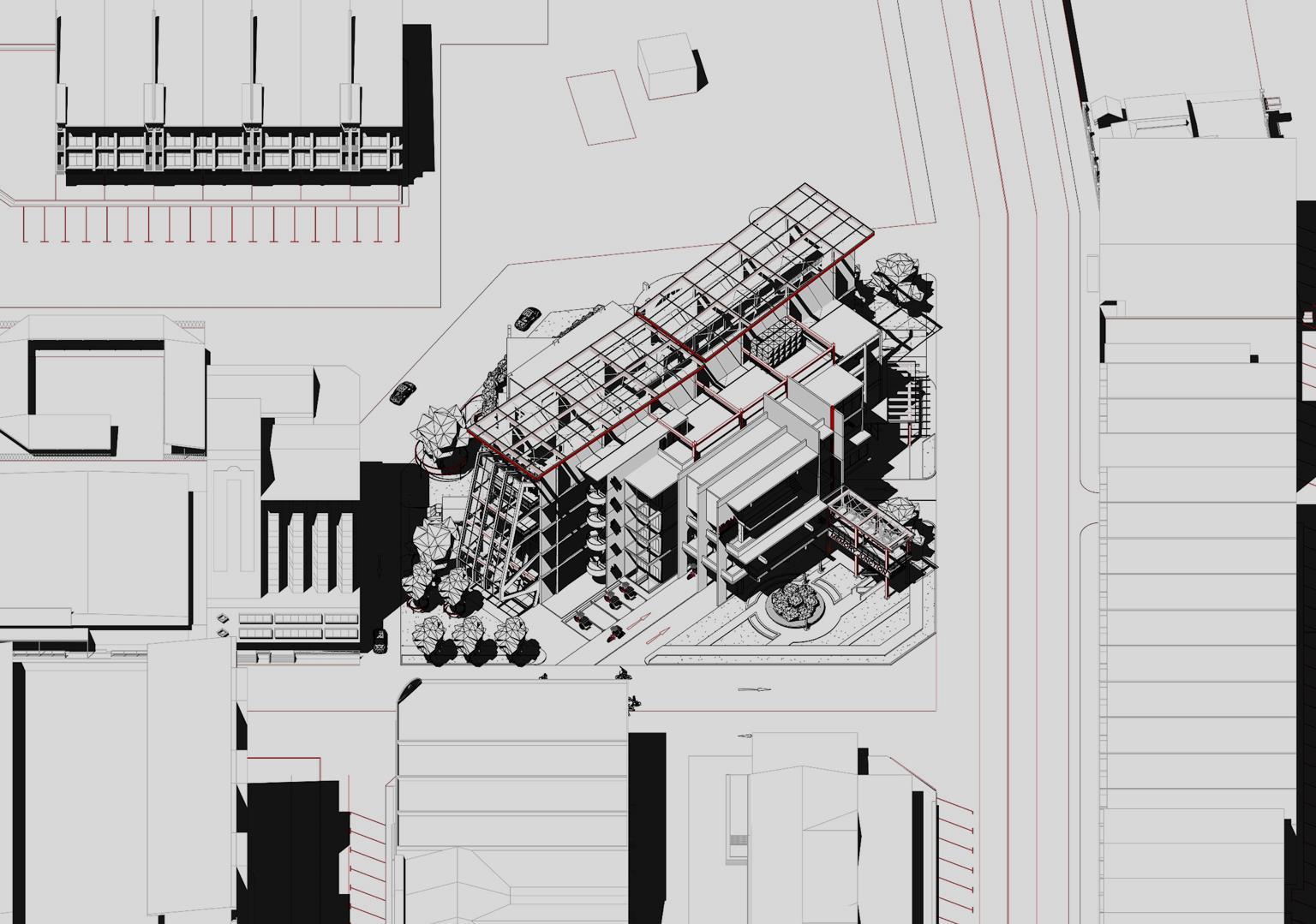
Cccc
Community Centre for Creative City
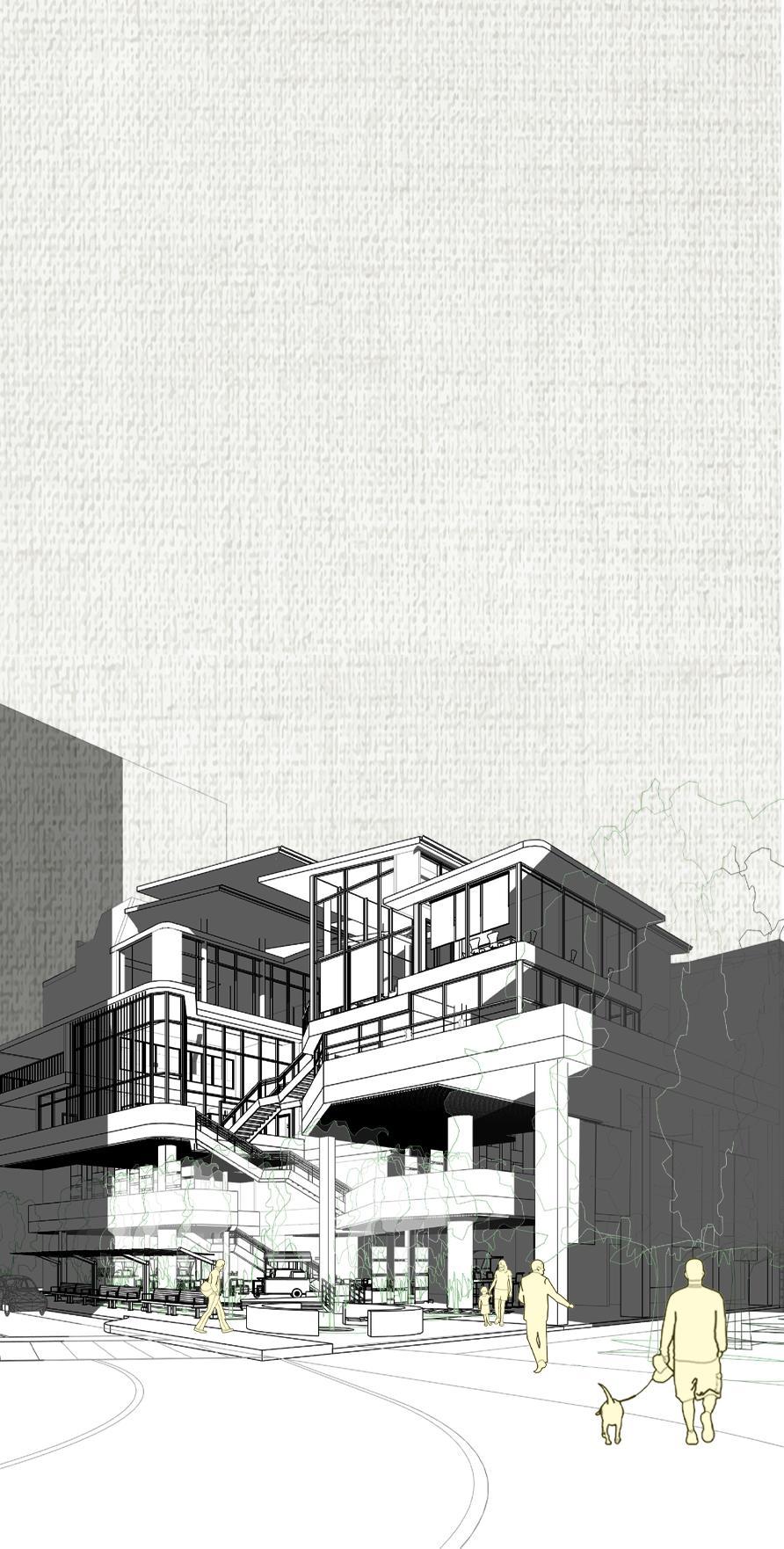
Medan Pasar, Kuala Lumpur
“building – building”
A city is more than just the sum of its inhabitants. It has the power to generate a surplus of amenity, which is one reason why people like to live in communities rather than in isolation. In city of unconnected spaces, buildings and facades are visually connected in terms of form and structure, showing the result of big blocks around the city, while pathways and circulations are created later surrounding the big blocks. But then to realise that the big blocks are a disguise showing the visual connection of how harmony the individual small blocks when living together.
“building – people”
The usual process of urban development treats buildings as isolated objects sited in the landscape, not as part of the larger fabric of streets, squares, and viable open space. Decisions about growth pattern are made from twodimensional land-use plans, without considering the three-dimensional relationships between buildings and spaces and without a real understanding of human behaviour.
“people – people”
According to the theory, urban life is bifurcated into public and private domains. In the public domain social relationships are typically superficial because people are usually interacting with others whom they do not know personally and may not see again. The individual small blocks are an act of selfishness and benefit, where users create individual barriers among small blocks which repels adjacent blocks but to welcome only consumers to approach and sparking economical interactions to themselves. Living in an urban setting can find ways of creating a sense of community despite the prevailing alienation and anonymity. The cultural structure is dominated by the majority norms, which forces individuals to form communities in new and different ways.
“an isolated city”
Understanding that building is not an isolated event but a small piece to a much larger system. The hidden alleyways and back lanes reflect the unseen vibrancy that add meaning to the place. Lost spaces, underused and deteriorating, provide exceptional opportunities to reshape an urban center, so that it attracts people back downtown and counteracts sprawl and suburbanization. The issue in Medan Pasar is segregated communities as people are living at their own pace and indulged with their personal schedules. Although efforts are made to reinforce the place identity but are too shallow to give impacts as there is a lack of commitment and participation from the community causing it becoming a city of unconnected spaces.

